History of the MG Car Club: Part 9
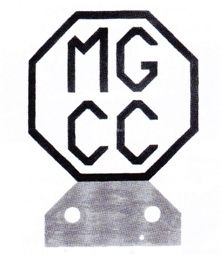
 References to many items of the Club’s history in this chapter also appear in a previous chapter which includes brief extracts from the Club news pages in The MG Magazine and The Sports Car. Typically, however Mike Hawke researched many of the stories and includes more background information.
References to many items of the Club’s history in this chapter also appear in a previous chapter which includes brief extracts from the Club news pages in The MG Magazine and The Sports Car. Typically, however Mike Hawke researched many of the stories and includes more background information.
The preceding story of the Club tells us a good deal about the events we held and what the members did. It gives little hint as to who did the background work, how it was organised, where the money came from, how the books were balanced, or the legal status of the Club. Indeed, we know little of these subjects yet they are of vital importance in understanding how the Club evolved and, as we shall see before the end of this chapter they left us with a legacy which influences us today.
At the original Roebuck meeting, a young John Thornley volunteered to be secretary. The owner of an M-type Midget, he was a trainee accountant living in London and attending the London School of Economics.
In those days there were no photocopiers, word processors or other easy ways of producing copies of documents. Even the typewriter was virtually unknown on the domestic scene. Writing a hundred letters and distributing them was somewhere between very difficult and impossible unless you had a good typing pool and office facilities available.
In Gary Watson’s video “lnside the Octagon”, John explains how he visited Abingdon most Saturdays on Club business and badgered Cecil Kimber to give him a job because he was finding it impossible to do a full-time job in London and run the Club business from (to be noted) Abingdon. As Cecil Kimber was Chairman of the Club one must presume that John visited Abingdon to get the Club mail which he had drafted during the week typed and distributed. When he was given a job, “on November 3, 1931 and life really began for me”, no doubt that secretarial assistance was put on a much firmer footing.
When I first became involved in Club organisation in the late 1950s, life was simple. If you were running an event, you simply sent a draft of the regulations and entry forms to Abingdon and they typed, printed and circulated them exactly in accordance with your instructions, at no cost to your Centre. One imagines that John Thornley set up the prototype of this system back in the early 1930s.
The Club expanded. Monies involved became bigger. One problem which faces any group of private people conducting an activity is, “What do we do if we run into debt?” Debts can arise from all sorts of unexpected angles. If the creditors call in their dues, the individual members have to cough up. In fact, if the members’ pockets are deep enough to cover any possible sort of liability, this may not be considered a problem. In those days people were not so legal-minded and court cases against the Club for such things as possible damage to property as a result of trials activities were considered a remote possibility.
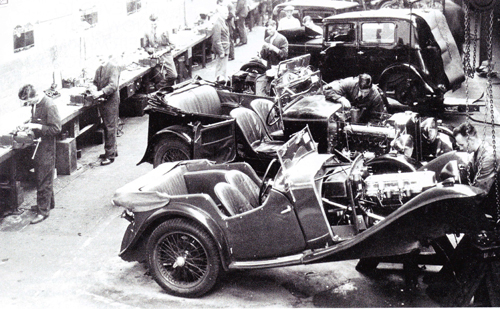
The answer was to make the Club a limited liability company. In April 1935 it was announced that the MG Car Club was now the MG Car Club Limited. The new company was ratified at the AGM on March 15. Having got that important piece of business over; Mr Kimber invited all those present to his club (Gilson’s) for a drink. It is reported that on the following morning, various members of the Midland Centre found themselves stranded at stations like Crewe and Stafford, beyond their intended destination of Birmingham, wearing the wrong overcoats, one of which belonged to Mr Kimber!
They had a few parties. One must remember that the membership of the Club tended to be twenty-something. The 1935 MG Car Club Annual Dinner held in London to coincide with the Motor Show was reckoned to have been the best of that particular season. The floor show included the Western Brothers (of at least the fame of the Spice Girls in their day). Apologies were received from Victor Riley and Sir Malcolm Campbell (probably genuine, especially as Sir Malcolm gave the main address at the 1936 dinner). In 1935 he was busy at Bonneville. Apologies also came from Hitler and Mussolini (this is questionable!). Mussolini’s apologies included an order for three R-types to keep his domestic pets, Maseratis, on their toes. Lord Nuffield was present. His on-the-spot response to this leg-pull is not recorded.
Returning to the sober matter of limited liability companies, members will be relieved to know that their maximum liability to pay off an MGCC company debt is £1 and that they have already put this into the kitty as part of their membership fee.
Regalia, a feature of any club’s activities these days (it’s good advertising and makes a bit of money), did not flourish in earlier days. Of course there was a Car Club logo, and a Club badge to put on the front of one’s car was available from the very start (pictured above). Designed by John Thornley, it was soon replaced by one in virtually the form we have it today.
It was not until September 1933 that things got moving with the issue of a Club tie. It comprised “a narrow light brown stripe between two thinner old-gold stripes on a dark-brown background”. No MG Car Club badge was in the design, you note. Price initially was 5 shillings (25p) but it dropped to 4 shillings (20p) and then to 3 shillings (15p). Was quantity production bringing the price down, or were they hard to shift? Lapel badges came in May 1934.
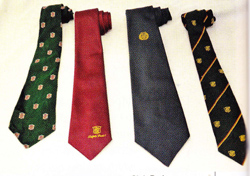
As late as 1951 there were complaints that badges were hard to come by. This was the most important and key item of Club accessories. It could well be that ties with the MG Car Club badge thereon were not available until after 1950.
One of the more curious episodes of Club life is that of associate membership. At a lower subscription, it was introduced in February 1936 and intended for people who did not have an MG. Probably it was aimed at those sporting motorists who wanted to join us to take part in our attractive competitions programme. However this resulted in the MG Car Club badge being seen on cars other than MGs and someone took exception. An associate members’ badge was introduced just like the real thing but in green, leading to the use of the expression ‘a green badge man’.
But people changed their car; swapped from MG to something else and back to MG, or owned more than one car. A series of announcements in The Sports Car tried to outline the rules for ‘proper’ and ‘green’ badges, swapping one for the other etc. Clearly there was much confusion. From this distant point of view it seems as if this was one of the many unnecessary complications which have ruffled the surface of Club life from time to time.
Perhaps the green badge episode dampened the Club’s enthusiasm for regalia. The next item to be offered was a linen MG Car Club badge to be sewn on your racing overalls, quite a few members raced. Scarves followed in 1936.
Some Club arrangements have disappeared, perhaps for ever. For instance, special carriages were arranged on the train which left Euston Station (London) at 7pm on Friday August 31, 1934. Why? So that members could attend the Tourist Trophy Races at Newtonards in Northern Ireland. The whole excursion, including ferry fares, cabins etc cost 4 guineas (£4.20) This was clearly a success for it was repeated in 1935. There was talk of organizing railway sleeper cars to the Le Mans 24-hour Race in 1935 but we hear no more of this one. A trip to the Paris Motor Show of 1937 was offered to Club members. This was cancelled because insufficient applications had been received by the day bookings had to be confirmed. Then a flood of applications arrived at HQ. In some ways members never change. Note that members tended to travel about the country by train if they were not actually on a motoring event.
Members were often offered non-motoring benefits. Some of those to be recorded include: 75% off the prices at Ace of Spades Swimming Pools (West London, I believe); Spares of up to £5 sent immediately by the MG Works to any MG Car Club member who broke down in Great Britain. Pay later. This was then 25% of the price of a new J2, say about £500 at MGF prices; Free parking at the premises of A&D Fraser Ltd, the MG agents, when visiting Glasgow for the Scottish Motor Show; Free membership of the Motor Sports Club, London; Reduced membership fees for the De Havilland Flying School Club at Hatfield.
We now come to a most significant event which is shrouded in mystery. In The Sports Car of December 1938 it was reported that: ‘An Extraordinary General Meeting of the Club was held in London on November 7 when a small attendance voted for an adjournment. It is likely that the adjourned meeting will be called for a date in early December’. We are further informed but not entirely enlightened by an item in The Sports Car for February 1939. ‘Extraordinary General Meeting. An extraordinary general meeting of the Club was held in London on January 2, when the two resolutions previously circulated to all members were carried unanimously without amendment The old limited company behind the Club is accordingly being dissolved and a new company being formed with articles of association drawn to meet the Club’s present and future requirements. No changes in the Club’s domestic arrangements regarding its subscriptions, its Centres, its events and so forth are contemplated.’
What was going on? When one reads in Lord Nuffield’s official biography that Morris Motors bought the MG Car Company Limited from Lord Nuffield in July 1935 and, later; the MG Car Club (Proprietary) Limited on January 14 1939, understanding dawns. We were joining the Nuffield Group of Companies. Why? This is not clear. It seems a bit late for this to be a bit of tidying up after the major restructuring exercise of 1935. Anyway this earlier upheaval had been brought on by Lord Nuffield’s tax position and one presumes that the MG Car Club was a minnow in that sort of level of accountancy. Did we need to ‘reserve’ our office premises at Abingdon? It has been suggested that our sponsoring of the Cream Cracker and Musketeer Trials Teams needed to be put on a stronger basis, this move virtually making it indirectly coming from the Nuffield Group, i.e. an MG Car Club team was virtually a Works Team. One in the eye for Leonard Lord? Perhaps this was why the reports in The Sports Car were so lacking in specifics.
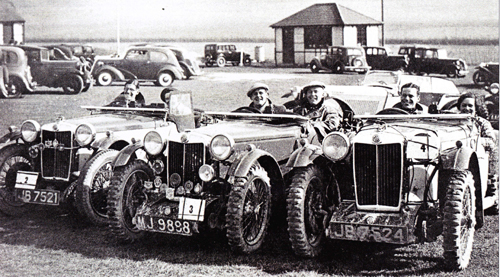
A much better clue is given in some later correspondence between John Norris of Joseph Cockshoot & Co Ltd (the MG Agent in Manchester) and John Thornley. The MG Car Club had become an important player on the motor sporting scene. It was thus important to the car maker that the activities of a bunch of amateurs (which most of them were and most still are) were carefully monitored. John Norris’ words were: ‘(1) It was possible for the MG Car Company to become involved in legal and moral responsibilities for acts of the Club and its members. 2) Club activities might take a form which was not in the interest of the MG Car Company’.
The carrot for this watchful constraint was assistance both financial and in kind. We took the deal, joined and remained part of this big corporation, including the British Motor Corporation when it was formed, until 1968.
Elsewhere in correspondence it is said that the MG Car Company had to step into and sort out our affairs in 1964 but I cannot find out why. Incidentally John Norris became the Clubs first elected vice president, in February 1953. The situation was similar in recent years, even if the method of control differed. To take the most outstanding example, our annual Silverstone Race Meeting is a major event and widely reported. It was sensible for Rover/MG to help with its success and, by doing so, to gain publicity for themselves.
Since the introduction of the MGF they did this to an increasing degree. This applies to all of our activities to some extent and we should all remember that, whatever we do in the name of the MG Car Club, we may be adding or detracting from the reputationof MG Cars.
But we get ahead of ourselves. The arrangements for the new Company had hardly been put into place before Britain was at war and all motoring activities ceased for several years. The MG Car Club’s sporting and social activities ceased.
‘Mit’ Harris continued as general secretary even though he was serving in the Royal Air Force and it was not until July 1942 that he finally resigned and handed over all his papers and Club property to Abingdon. The last issue of The Sports Car was dated October 1939 and this was probably mailed to members during September; probably after war had been declared. ‘Mit’ Harris had been a regular contributor to The Light Car some years before and he came to an arrangement whereby the MG Car Club had a page of news, written by him, once per month. The first such appeared in the October 14 issue and thereafter in the first issue of each month. Skeleton office arrangements were set up and T.W. Slingsby was appointed secretary by Chairman H.A. Ryder. This appointment was backed up by solicitor’s letter as George Propert deemed that it was ‘inadvisable to call a meeting of members’. The new secretary went sick and the duties were fulfilled by Hector Cox.
It was not until May 17, 1947, over eight years since the last, that a formal MG Car Club Council meeting was held and G S. Gardiner was elected as general secretary. George Propert’s background role in advising the Club during these lean years should not be underestimated. It was he who predicted that the magazine The Morris Owner would become a Nuffield House publication and expand its coverage to all Nuffield makes. He seems to have been the one to have booked a slot for us in the magazine when it became the New Outlook on Motoring, later to become plain and simple Motoring.
Supported financially out of the MG Car Companys publicity budget, office accommodation and secretarial support were assured. This move also explains some of the constraints placed upon us in the matter of commercial activities (we belonged to the producers of spare parts so we had no business or apparent need to make our own arrangements) and to this very day the ownership of our Club badge is in Rover’s hands, as is the gift of allowing us to use the magazine title Safety Fast!.
You will notice that, in his piece, Wilson McComb counts all overseas members as full members. They were. They all got their very own copy of Safety Fast! and Motoring before 1959. British Motor Corporation sent it to them and we had our say and provided a section of the mailing list. So, if you were a member of, say the MG Car Club of Capetown, you received your personal copy of Safety Fast! and were a full MGCC member. Your social and sporting activities with the MGCC Capetown were a voluntary bonus of membership.
That all stopped very suddenly in 1968. This was a blow to the Club. The way it is told by Gordon Cobban amounts to one of the understatements of all time. Even today, when we have more UK-based members and more Affiliated Overseas Clubs than ever we have yet to recover the overseas circulation of Safety Fast! and hence, one assumes, the spread of knowledge by our overseas members of what we do in the UK and how they might tap into our services and events. In other words, we have yet to fully recover from events following the Leyland takeover.
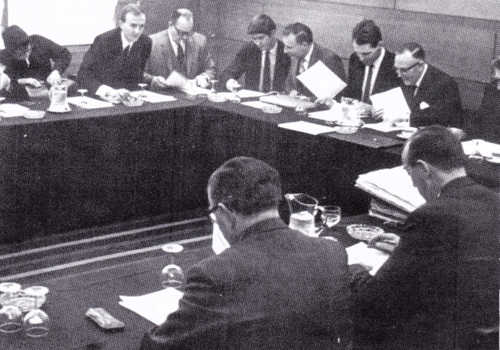
Wilson McComb’s obituary for the clubs accommodated at Abingdon was short and to the point: “BMC CAR CLUBS – we have learned that the British Leyland Motor Corporation is to withdraw its support from the four BMC-sponsored motor clubs; the Austin-Healey Club, MG Car Club, Mini-Seven Club and Riley Motor Club. This means that the Car Clubs Office at Abingdon will, of necessity, be closed fairly soon’. The future of the clubs will rest with those who give so unstintingly of their leisure to organise club activities on a regional Centre basis. As to the decision, which has been taken, comment would be superfluous and serves no useful purpose. I can only offer my wholly inadequate thanks to all of you who have done so much and served these clubs so unselfishly in the past Thank you one and all.”
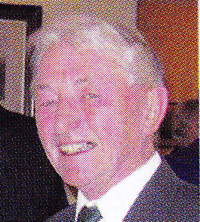
Mike Hawke’s long association with MGs began in 1923 when he purchased a J2 when a student at the Royal Naval College at Dartmouth. He later went on to the Royal Naval Engineering College at Manadon, eventually graduating and working for the N4OD Naval Department. His work on submarine design took him to the Far East where he got involved with the local Singapore Car Club. It was here that he found the remains of a K3 which he subsequently restored. On return to the UK he was transferred to Scotland where he became involved with the Scottish Centre competing with the faithful J2. Returning home to the Bath area he was one of the first to join the newly formed Triple-M Register in 1961, becoming its popular and hard working Secretary for 10 years. With retirement from the Navy in 1993 he took up Chairmanship of the MGCC for three years, later being elected a Vice President. He wrote a number of books; his main legacy being the definitive Club history – The First 70 Years – completed in 2000, which forms the basis of these serialised updated and enlarged Safety Fast! features. Having bravely fought cancer, Mike died in 2010 following an accident at home.
NAMGAR would like to thank Andy Knott, Editor, Safety Fast! for his kind permission to reproduce these articles.

